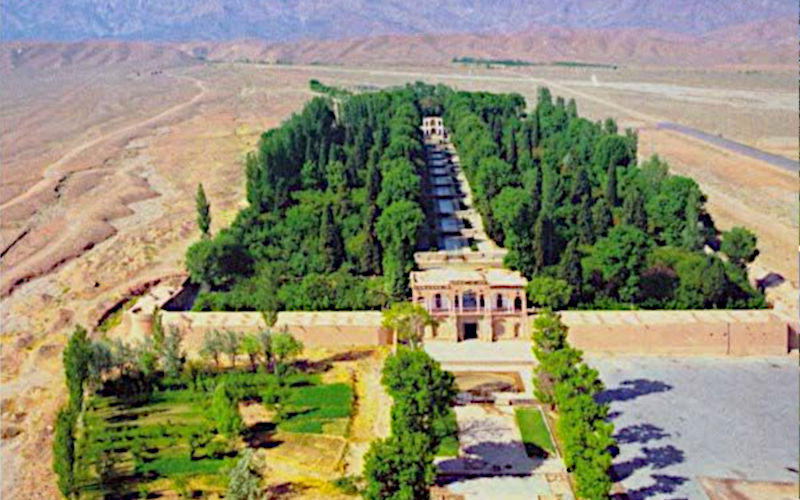Persian Gardens: Meanings, Symbolism, and Design
DOI:
https://doi.org/10.3097/LO.201646Keywords:
Persian gardens, symbolism, meaning, culture, chahar-baghAbstract
Culture and identity in a society can be represented in the architecture and the meanings intertwined with it. In this sense, the architecture and design are the interface for transferring meaning and identity to the nation and future generations. Persian gardens have been evolved through the history of Persian Empire in regard to the culture and beliefs of the society. This paper aims to investigate the patterns of design and architecture in Persian gardens and the meanings intertwined with their patterns and significant elements such as water and trees. Persian gardens are not only about geometries and shapes; but also manifest different design elements, each representing a specific symbol and its significance among the society. This paper seeks to explore Persian gardens in terms of their geometric structure, irrigation system, network construction and pavilions alongside design qualities such as hierarchy, symmetry, centrality, rhythm and harmony. In the
second stage, the paper investigates the fundamental symbols and their philosophy in the creation of Persian gardens and in relation to the architecture and design.
References
On the conceptual analysis of gardens. (1993). Journal of Garden History, 13(4), 189-198. doi:10.1080/01445170.1993.10412487
Towards an interpretation of the use of water in islamic courtyards and courtyard gardens. (1987). Journal of Garden History, 7(3), 197-220. doi:10.1080/01445170.1988.10412469
Alemi, M. (0000). Symbolism in persian gardens: The nature sense in the safavid royal gardens. Manzar, , 17.
Alon-Mozes, T. (2004). Gardens and the emergence of culture: The meir garden: The first hebrew garden for the first hebrew city — tel aviv. Studies in the History of Gardens and Designed Landscapes, 24(1), 55-64. doi:10.1080/14601176.2004.10435312
Ansari, M., Taghvaee, A. A., & Nejad, H. M. (2008). Cultural beliefs regarding persian gardens with the emphasis on water and trees. African and Asian Studies, 7(1), 101-124. doi:10.1163/156921008X273097
Babaie, S. (1997). Paradise contained: Nature and culture in persian gardens. Studio Potter, 25
Bacon, F. (1883). Of gardens (1625). The Genius of the Place-the English Landscape Garden 1620-1820, , 51-56.
Borazjani, V., & Javadi, M. R. (2004). Persian Garden: Ancient Wisdom, New Perspective,
Brookes, J. (1987). Gardens of Paradise: The History and Design of the Great Islamic Gardens,
Clark, E. (2004). The Art of the Islamic Garden,
Faghih, N., & Sadeghy, A. (2012). Persian gardens and landscapes. Architectural Design, 82(3), 38-51. doi:10.1002/ad.1403
Gharipour, M. (2011). Transferring and transforming the boundaries of pleasure: Multifunctionality of gardens in medieval persia. Garden History, 39(2), 249-262.
Hall, S. (1997). Representation: Cultural representations and signifying practices. Representation: Cultural Representations and Signifying Practices,
Hobhouse, P. (2003). Gardens of Persia/Penelope Hobhouse,
Hunt, J. D. (2000). Greater Perfections: The Practice of Garden Theory,
Karimi-Hakkak, A. (1998). Iranica heirloom: Persian literature. Iranian Studies, 31(3-4), 527-542. doi:10.1080/00210869808701930
Khansari, M., Moghtader, M. R., & Yavari, M. (2004). The Persian Garden: Echoes of Paradise,
Mansouri, S. A. N. H. V. (2011). Chahar bagh. A study of the origin of the chahar bagh concept as a model for iranian gardens. Manzar, 14, 16-23.
Massoudi, A. (2009). Acquaintance with Iranian Gardens Bagh-e Shazdeh,
Mehdizadeh Saraj, F., & Nikoo Goftar, A. (2011). A comparative study on approaches to achieve tranquility, calmness and meditation in traditional gardens of iran and japan. Bagh-INazar, 17, 31-43.
Motallebi, R. (2013). Existence sound of iranian garden. Manzar: The Iranian Scientific Journal of Landscape, 4, 50-51.
Moynihan, E. B. (1979). Paradise as a Garden in Persia and Mughal India,
Müller-Wille, S. (2001). Gardens of paradise. Endeavour, 25(2), 49-54. doi:10.1016/S0160-9327(00)01358-2
Naghizadeh, M. (2013). Representations of beauty in persian gardens. Manzar: The Iranian Scientific Journal of Landscape, 5, 6-9.
Petruccidi, A. (1997). Agriculture and the timurid chaha'rba'gh: Evidence from a medieval persian agricultural manual. Gardens in the Time of the Great Muslim Empires, , 110-128.
Pirnia, M. K., & Gardens, I. (1994). Iranian gardens. Abadi Journal, 4(17), 67-74.
Sarbangholi, S. H., & Shahed, M. (2012). Review of similarities between persian musical concept and architecture of persian garden (case study: Kashan fin garden). Memari Va Shahrsazi Arman Shahr, 9, 97-110.
Shahidi, M., Bemanian, M. R., Almasifar, N., & Okhovat, H. (2010). A study on cultural and environmental basics at formal elements of persian gardens (before & after islam). Asian Culture and History, 2(2), 133-152.
Taghvaei, S. (2011). The totality of the garden and the evergreenery secret. Manzar: The Iranian Scientific Journal of Landscape, 3, 6-11.
Tajaddini, L. (2010). "Review of the characteristics of mahan garden: One type of persian gardens". World Academy of Science, Engineering and Technology.International Science Index, 8, 1264-1267.
Wilber, D. N. (1979). Persian Gardens and Garden Pavilions,

Downloads
Published
How to Cite
Issue
Section
License
Copyright (c) 2019 Leila Mahmoudi Farahani, Bahareh Motamed, Elmira Jamei

This work is licensed under a Creative Commons Attribution 4.0 International License.










